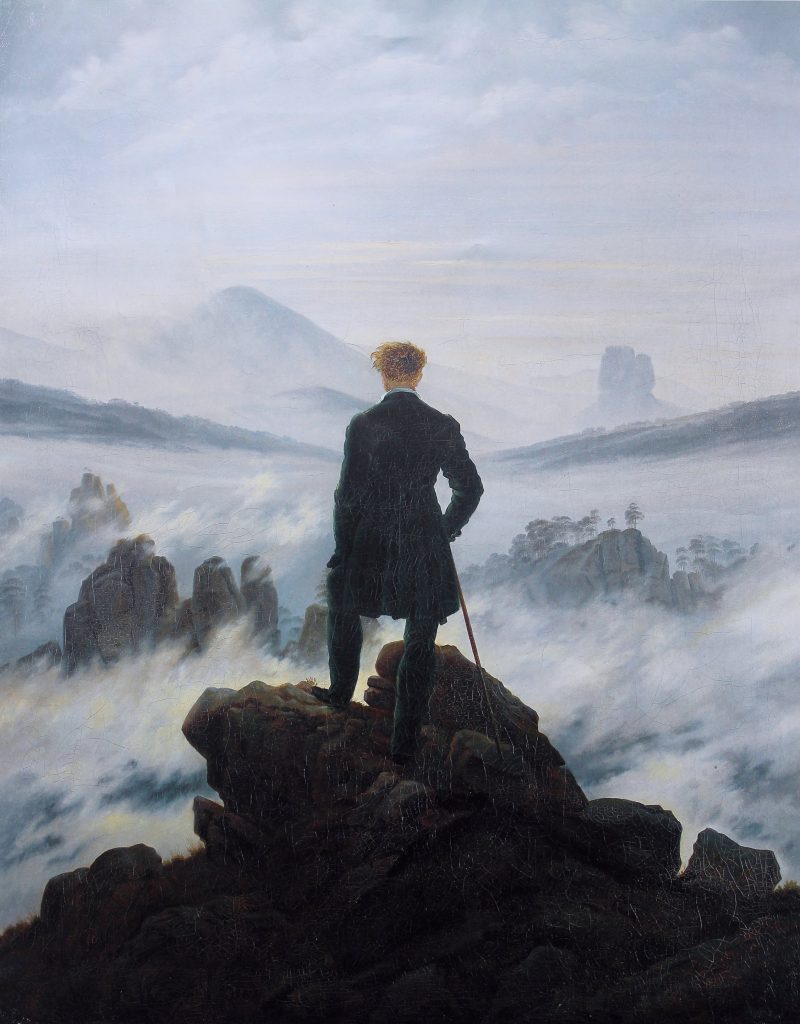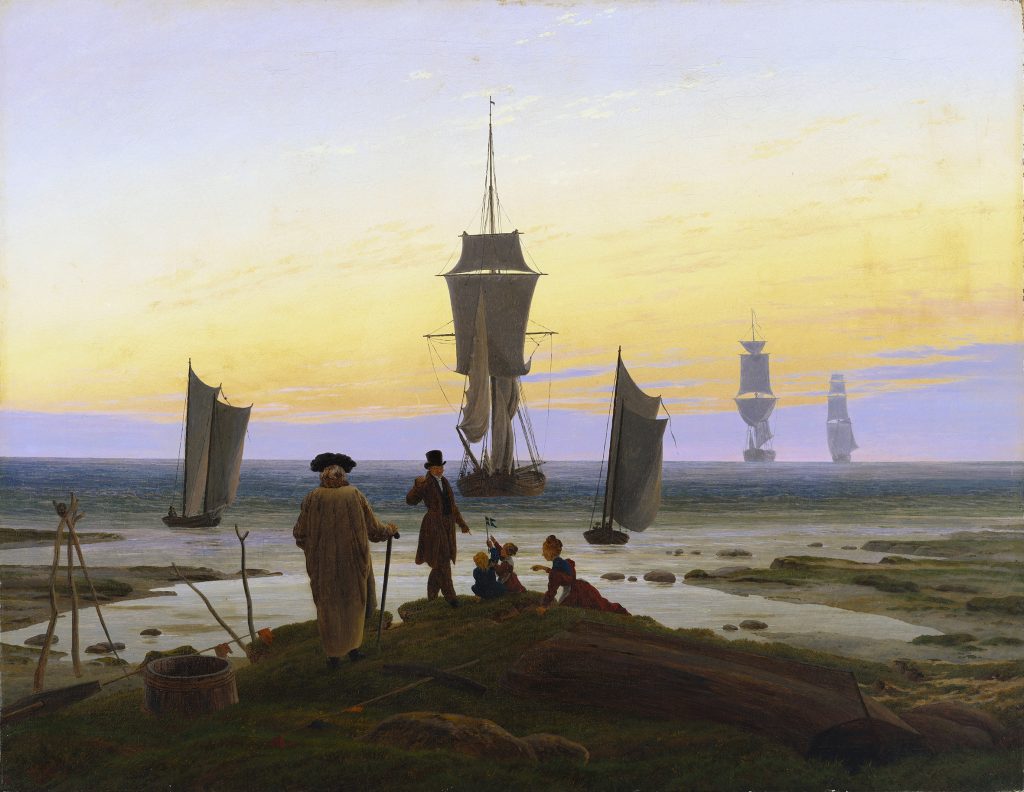
Casper David Friedrich was born on September 5th, 1774 in Greifswald, north-eastern Germany. He is known as one of the leading figures of the German Romantic movement and for his allegorical landscapes. Much like what the Romantic movement stood for, Friedrich’s paintings show his individualism and boldness in pursuing personal expression. His many landscapes and seascapes pursue themes of isolation and human helplesness. They are based very closely on observation, but also include an imaginary response, utilizing bolder colours and dramatized elements to support stronger atmospheres. Before he began painting Frierich studied at Copenhagen Academy starting at the age of 20. He left four years later to contiue his studies in Dresden, where he became a member of an artistic and literary circle.

One of his first notable pieces was “Das Kreuz im Gebirge” or “The Cross in the Mountains”. This painting established his style, becoming one of his many paintings characterized by a powerful sense of stillness and isolation. Additionally, this painting forshadowed Friedrich’s nontraditonal approach to relgious scenes, as it aimed to use landscapes allegorically to represent religious concepts. Friedrich’s work peaked around 1816 when he began generating a steady income from the Dresden Academy. His popularity, however, was short lived, as the romantic movement began to give way to realism. His increased display of political attitudes in his work regarding the Napoleonic Wars further earned him harsh critism. Despite having created 122 artworks, many of which hang in galleries today, by the time of his death Friedrich was almost entirely forgotten, with the exception of a small inner circle. The end of Friedrich’s life was not an enjoyable time to say the least, as he sufered from two strokes before his death. Due to this decline in popularity and health, Friedrich spent his last few years in poverty. He was an artist ahead of his time conceptually, who’s work only began to revive and be appreciated in the 20th century.




Sources
“Caspar David Friedrich | German Painter.” Encyclopedia Britannica, 1 Sept. 2021, www.britannica.com/biography/Caspar-David-Friedrich.
“Friedrich Paintings, Bio, Ideas.” The Art Story, www.theartstory.org/artist/friedrich-caspar-david. Accessed 14 Oct. 2021.
“Caspar David Friedrich.” Artble, www.artble.com/artists/caspar_david_friedrich.
The romantic vision of Caspar David Friedrich: paintings and drawings from the U.S.S.R., New York: Metropolitan Museum of Art; Chicago: Art Institute of Chicago; New York: Distributed by Abrams, 1990.
Yohahnah,
Excellent work on CDF here! You are only the second student in your cohort to post on him (along side Tolan) which really surprises me as in years past he was one of the most popular choices with students. Really though very solid research and information combined with your own personal thoughts and feelings about the works in question. I’m giving you 2/2 on both your first two posts so well done!
Jeff